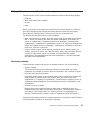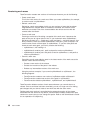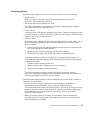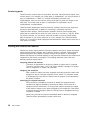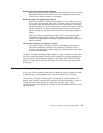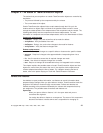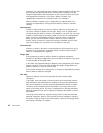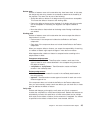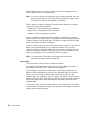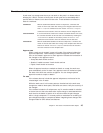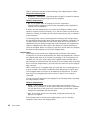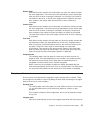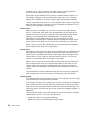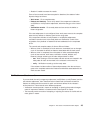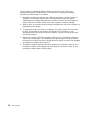
Review state
Defects or features move to this state after they have been sized. In this state,
the design text and sizing records are reviewed to determine the feasibility of
the proposal. The owner can do one of the following:
v Accept the defect or feature if all design and sizing records are acceptable.
This moves the defect or feature to the working state.
v Return the defect or feature to the originator if all design and sizing records
are not acceptable. If necessary, the originator can reopen a defect or
feature.
v Move the defect or feature back to the design state if design modifications
are needed.
Working state
Defects or features move to this state when the owner accepts the defect or
feature when it is in the:
v Review state, if the component includes the dsrDefect or dsrFeature
subprocess
v Open state, if the component does not include the dsrDefect or dsrFeature
subprocess
When you accept a defect or feature, you accept the responsibility of resolving
it. A defect or feature might require changes in more than one release.
What happens after a defect or feature is accepted varies according to the
subprocesses in effect:
Component subprocesses
v dsrDefect or dsrFeature - TeamConnection creates a work area in the
approve state for each release identified in the accepted sizing records for
the defect or feature.
v verifyDefect or verifyFeature - TeamConnection creates verification
records in the notReady state.
Release subprocesses
v fix - TeamConnection creates fix records in the notReady state based on
the sizing records.
v approval - TeamConnection creates approval records for each user on the
release’s approver list.
If the component does not include the dsrDefect or dsrFeature subprocess,
then you must manually create a work area before you can check out or create
parts to address the defect or feature.
Verify state
Defects and features go through the verify state only if their component
includes the verifyDefect or verifyFeature subprocess. Defects and features are
automatically moved to this state when all work areas (there can be multiple
work areas for the defect or feature) for the release are integrated. If a release
is specified on the defect or feature when it was created, then the
Chapter 4. The states of TeamConnection objects 43



